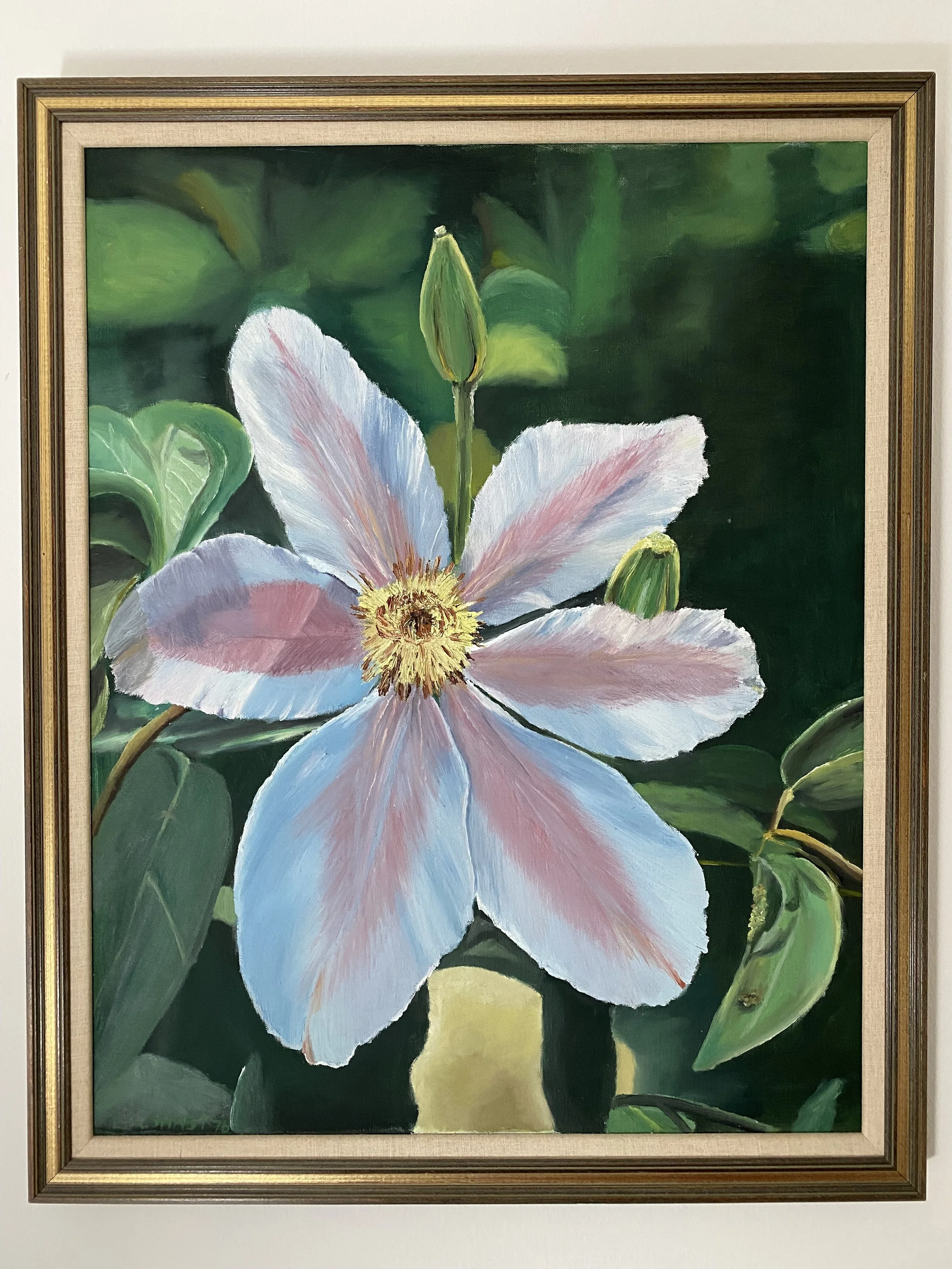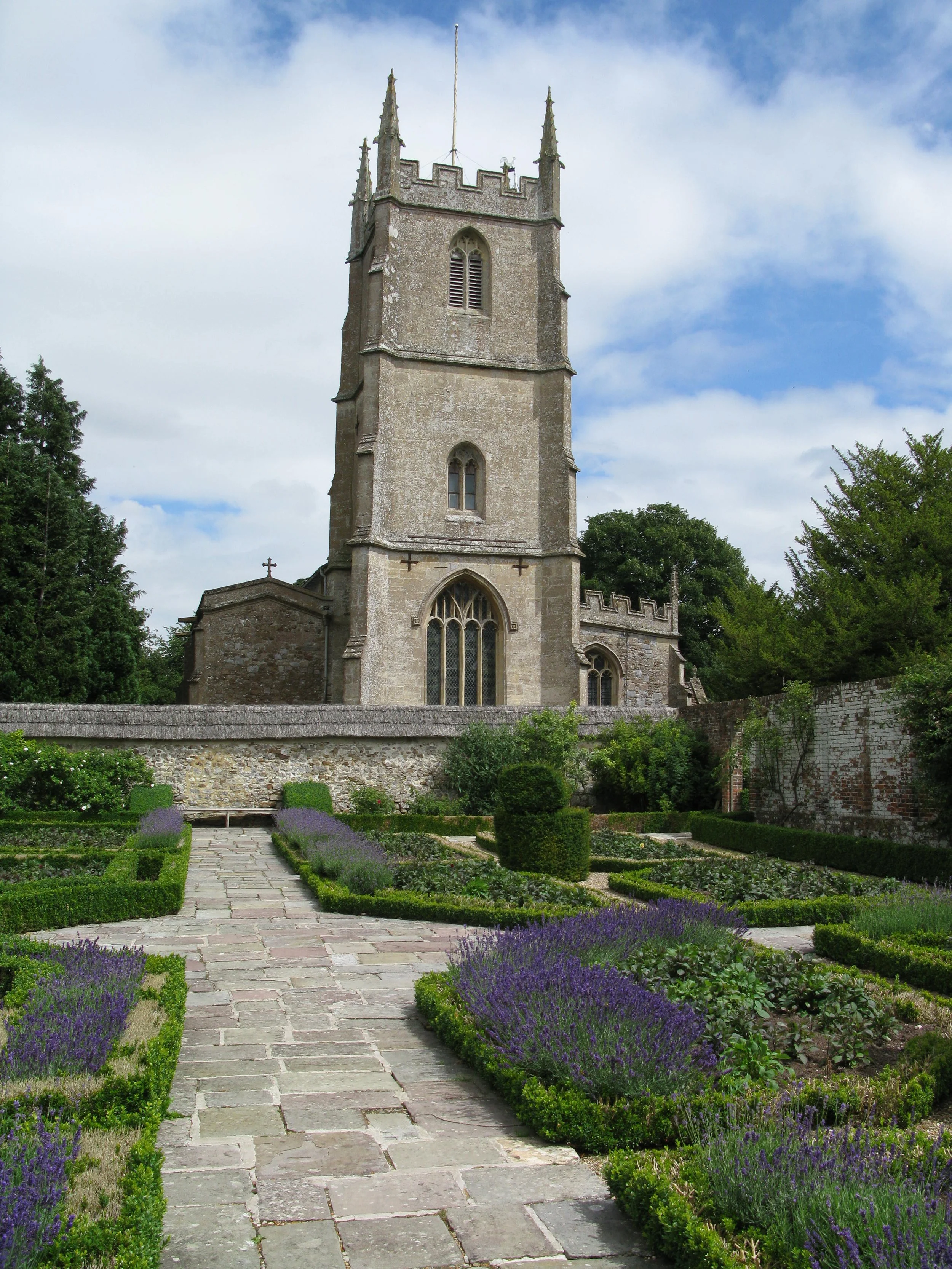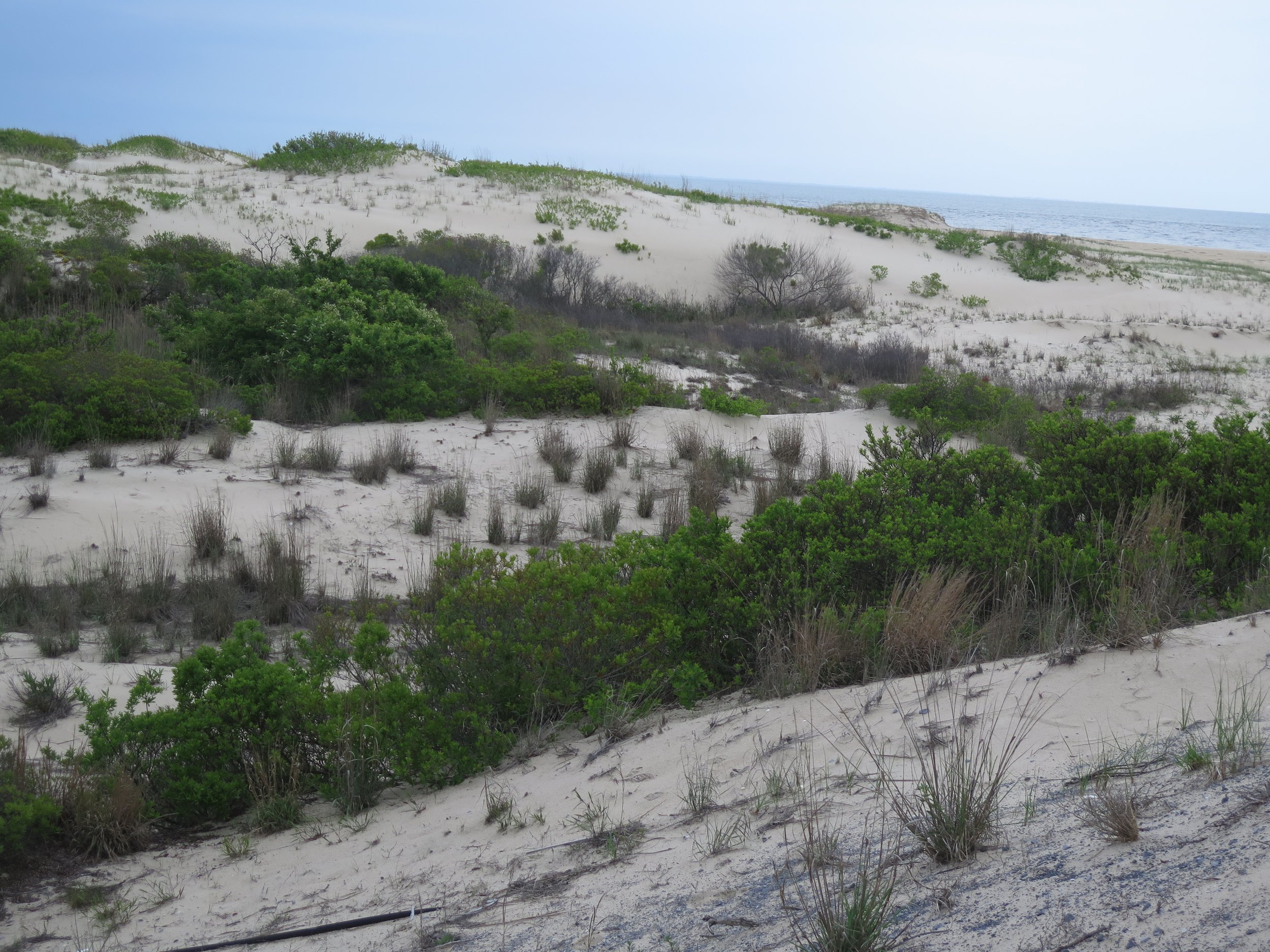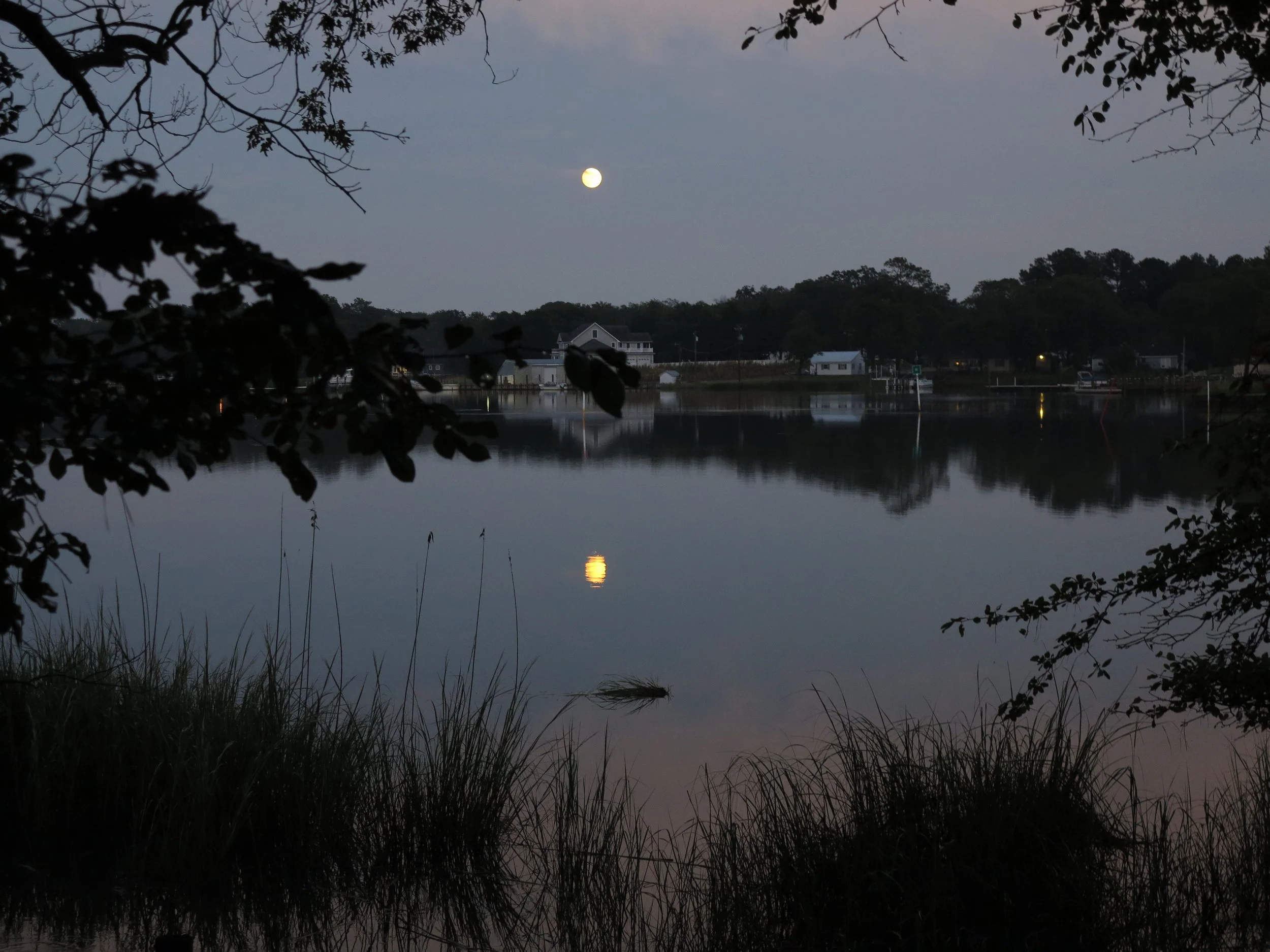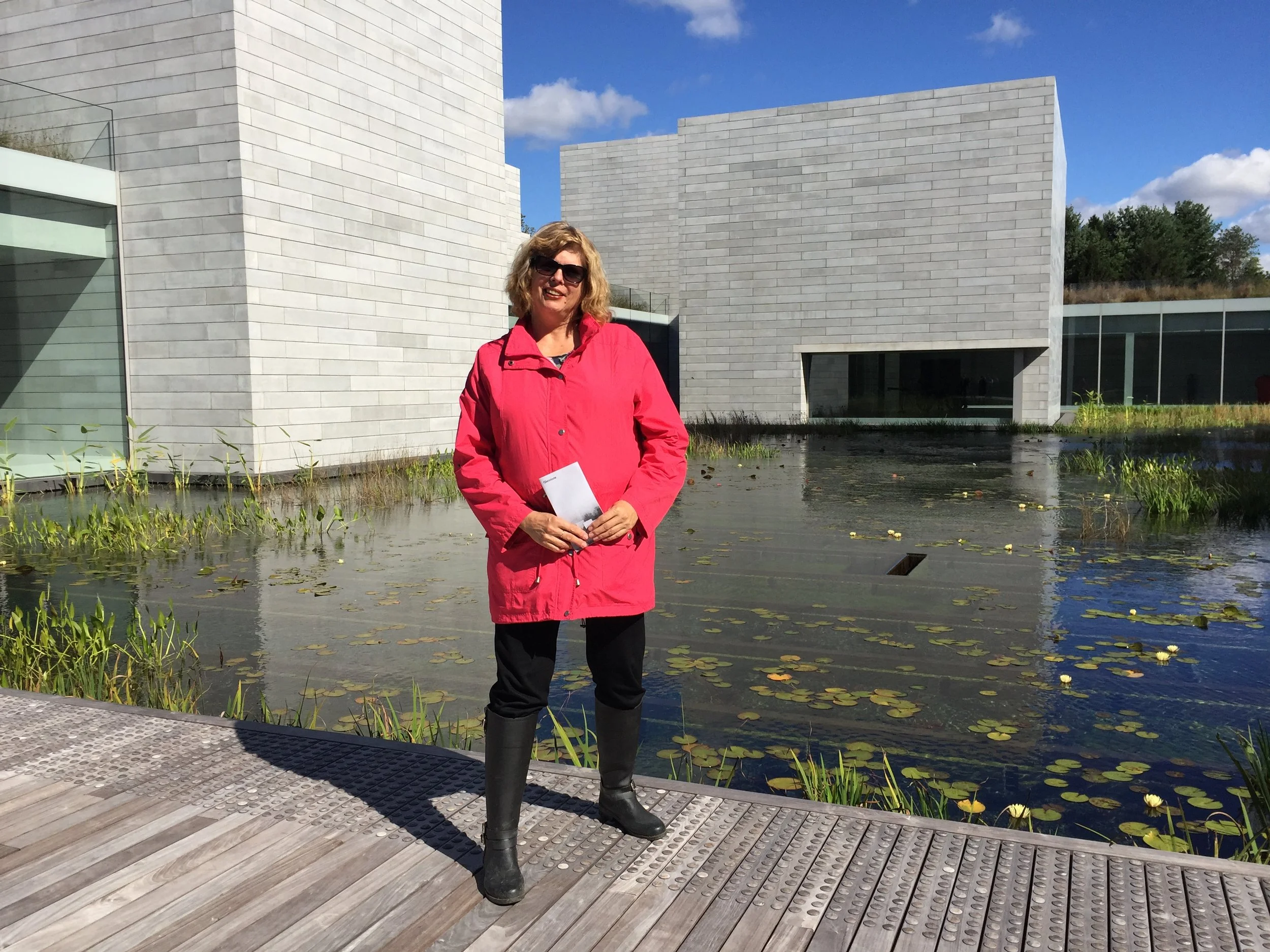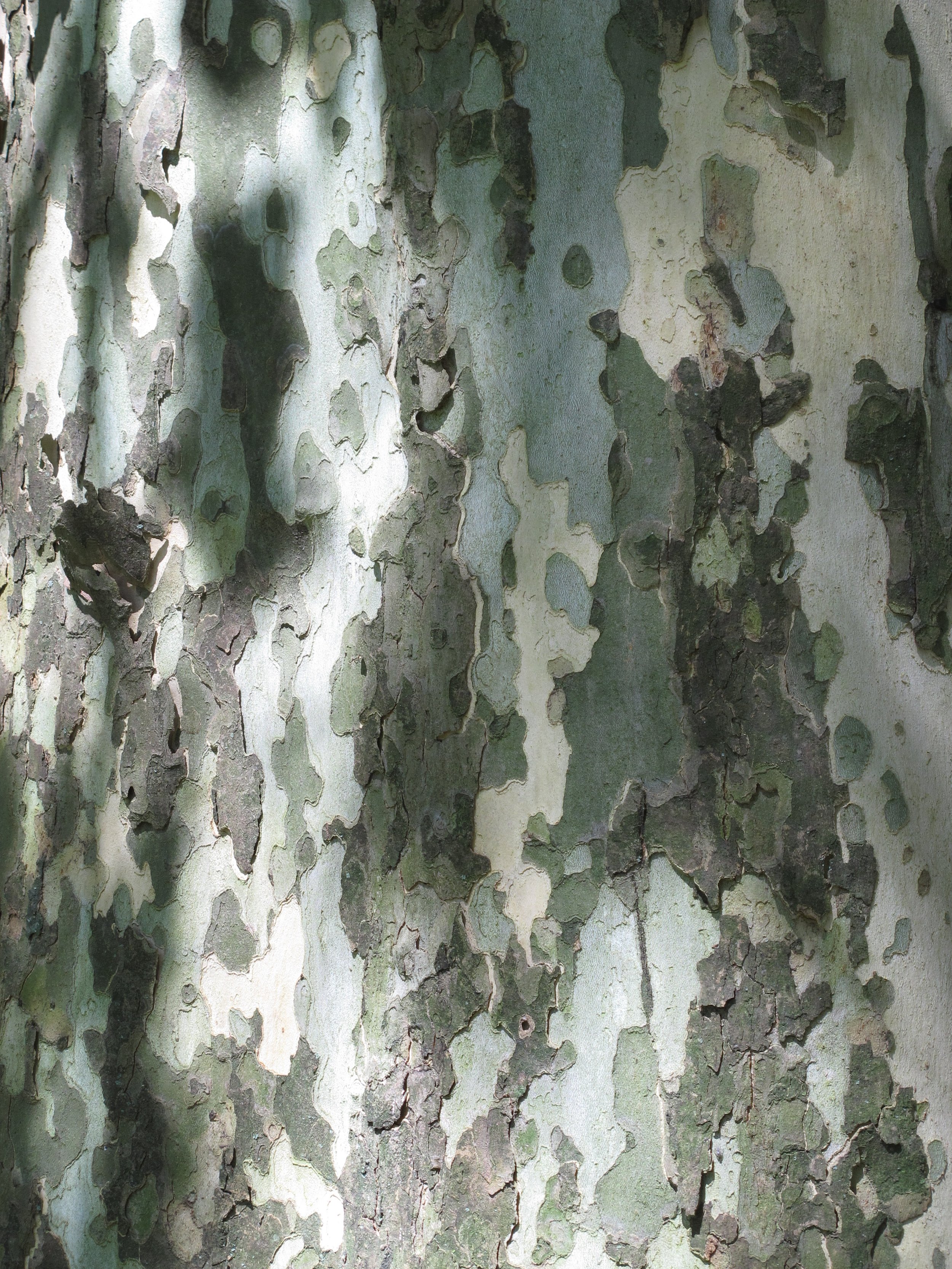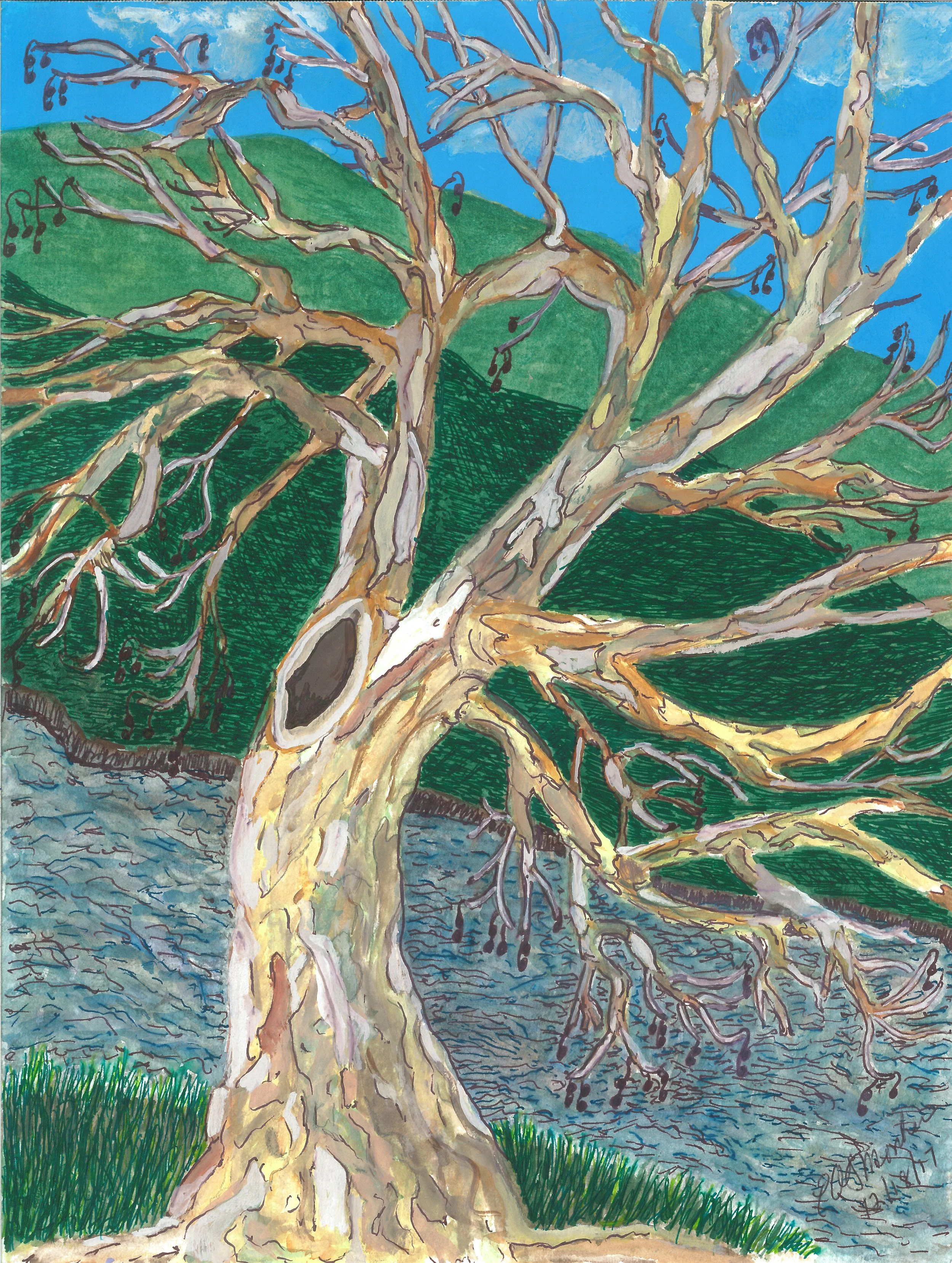Hello, my name is Eva Monheim. Welcome to my website and galleries where you can see some of the hundreds of works that I want to share with you for purchase. But first a little bit about me and how I got started in the art field.
First of all you need to know that I am an ardent tree hugger. We owe our lives to trees and the atmosphere they provide for us. But they are also critical for art – for paper production, wood for stretchers, brush handles, paints, and the list goes on. This is definitely my horticulture background speaking.
This is me hugging a giant Atlas cedar (Cedrus atlantica)
The study of horticulture and art grew hand-in-hand for me. When I was five I was making craft ceramics with my mom in a neighborhood studio. I cleaned and painted the already poured objects that I was able to pick off the shelves. But I loved just getting a blob of clay and making figures, mainly animals.
By the age of eight I painted my first oil painting; a landscape from a place in Virginia along the Potomac. Most of my work back then was photo realism. Taking pictures or finding photos that I liked in magazines or books and then reproducing them as close as possible to the original photo. Here are two of my paintings from my early teens.
Clematis
Mt. Shasta
My high school always had art shows once a year and the best paintings were selected and put into the school’s permanent collection. My ‘Carmel Seascape’ was honored with that award. It seemed that the painting was popular because it hung in the principal’s office in the high school for several decades through several principals. (They could make their own selections from the collection - they chose mine.)
I was encouraged to attend art school by my high school art teacher. But I was torn between horticulture and art. I applied to Penn State University for horticulture and was accepted into their program.
During my second year of university, I asked my advisor if I could apply for a second degree in the art program in the Arts and Architecture College. Horticulture was in the Agriculture College. My professor understood my passion for art and horticulture – he had the same passions – he was a professor of horticulture and an art collector. He petitioned the president of the university for a waiver for me to be a student in both colleges for two separate degrees. The president said it was highly unusual and it had never been done before under his watch but he approved it. I graduated with a Bachelor of Arts in Art and a Bachelor of Science in Horticulture.
During my early career, I did garden design and installations for owners of estates in the Philadelphia area. It was rewarding to see my drawings come to fruition in the gardens of our clients. I also did floral design for our clients – the flowers came from the cutting gardens that we installed. This led me to open my own floral shop. The designs I created were not typical creations for the U.S. clientele. I did European hand-tied bouquets and naturalized arrangements that you see now in mainstream floral shops. Back in the early 80s, it was rare that you saw an arrangement with flowers, fruits, and vegetables all in one design or a meadow design of wildflowers. My creations were featured in Better Homes and Gardens specialty magazines and later in other gardening magazines like the Pennsylvania Horticultural Society’s Green Scene magazine.
For fifteen years I designed and organized the speakers series for the Philadelphia Flower Show and always opened the show with my creations. I did hundreds of lectures and demonstrations for the Philly Flower Show, garden clubs, and civic groups around the region. I then began teaching as an adjunct professor at Delaware Valley College (now Delaware Valley University) in tandem while having my floral shop. I taught Basic Design and Advanced Floral Design and a Horticulture Business Management course.
Me at the Philadelphia Flower Show. You can tell I love color. The color combination I wore was by accident and perfect for this LOVE sculpture.
After teaching these courses for five years and still doing floral design but no longer having a floral shop, I went back to school to study English literature at Arcadia University. It was here that I learned to connect inspiration through writing. I now had three methods of interpreting art – through the written word, through the landscape, and through various mediums in art.
The subject of my thesis was How Landscapes Affect the Minds of Writers – specifically Salman Rushdie’s writings. I did a series of drawings for my thesis that suggested how Mr. Rushdie might think of landscapes influencing his writings. I wrote my thesis in England at the University of Reading after winning an International Rotary Ambassadorial Scholarship to study at the University of Reading. While at Reading I also studied horticulture towards a fourth degree concentrating on landscape history and the environment.
I toured several hundred English Gardens between 1996 and 2010 for inspiration and for my studies. My photographs became my way to tell stories in articles and lectures. I interned at several magazines for horticulture and wrote many articles which I continue to write today.
In 1997 I joined Garden Communicators International (GardenComm) which offered me the opportunity to visit gardens across the U.S. and Canada.
In 2005, I became an adjunct professor in horticulture and landscape architecture at Temple University. A year later I became a full-time faculty member and taught thirteen different subjects. Each course added another layer of understanding within the horticulture field especially overseeing my students’ research, the identification of woody plants, and working with graduate students in sustainable design. These courses helped to strengthen my understanding of ID features in plants and their communities and to be a keen observer of landscapes. During this time I took many trips to locations to observe successional growth along the shorelines, into bogs and fens, salt marshes, the Pine Barrens, and so on. The following are some photos from my journeys.
Cape Henlopen showing the first and second dune formations and their visual variation and ecosystems.
The full moon rising at Delaware Botanic Garden’s shoreline at Pepper Creek.
One of the gardens I visited was Glenstone Museum and Gardens in Potomac, Maryland. This private contemporary art museum did not disappoint. I was impressed with the size of their water garden. I observed it from the inside while looking out from the galleries then I went outside to observe it. Here I am on the deck outside the galleries surrounded by beautiful architecture and the water garden.
“Glenstone seamlessly integrates art, architecture, and nature…”
As a member of GardenComm, we toured the site with one of our colleagues who is the Director of Environmental Stewardship at Glenstone. The behind-the-scenes tour focused on how art, architecture, and nature are intertwined. The natural landscape with rolling hills provides the perfect setting for the buildings which sit within the landscape rather than on top of the landscape. The landscape and the buildings become a work of art too!
In the summer of 2017, while teaching at the university for over a decade, I challenged myself to do 100 paintings by the end of 2017. I began working on color studies - color being my favorite design element. The challenge was completed by the year’s end despite my rigorous university schedule.
I felt a renewed connection and commitment to painting. I left my teaching position at the university close to the completion of my painting challenge but I did not leave teaching altogether. I had been teaching Arboriculture and Woody Plants at Longwood Gardens in Kennett Square since 2009 while at the university and I continue to teach there. I also traveled more to observe gardens in our region and beyond.
The waterlilies (Nymphaea sp.) at Glenstone and the waterlilies at Longwood Gardens inspired me to create a series of paintings of the subject matter starting with a series of my photographs.
In these paintings I wanted to show the progression of the opening of the waterlilies and bring the viewer closer to them in the last work.
Another inspiration is the London plane tree (Platanus x hispanica). I typically teach this tree in my Woody Plants classes at Longwood Gardens. From my photos, I can hone in on the key identification features of the tree. In the mixed media artwork that I created; I made the tree whimsical in nature as if dancing. It has the mottled and exfoliating bark that is classic for this tree along with the pair of fruits dangling – held on the tree during the winter months. Come spring these fruits start to break apart and their seed flies through the air with fluffy feather-like appendages.
The London plane tree can be found in riparian areas as well as being a street tree especially in London along the Thames, in Paris along the Avenue Champs-Élysées, and Philadelphia along the Benjamin Franklin Parkway. I chose to paint it along a stream.
The London plane tree was discovered in Kew Gardens in London and was believed to be a cross between the American sycamore and the Oriental plane tree (Platanus occidentalis and Platanus orientalis) hence the London plane tree was born in London giving it its common name.
When I taught at the university we had a stand of Osage oranges (Maclura pomifera) (photo below - top center photo and the far left photo). I taught Osage orange in my classes and spoke about its history that harkens back to colonial days. It was used for hedging to keep cattle corralled. The wood is rot-resistant and holds up well as a hedge and it also has great recoiling properties which made it ideal for making bows for bows and arrows.
In the 1800s barbed wire was invented to take the place of plants like the Osage orange. The collage of plants in the painting below represents that history. The pectinate branch below the osage orange in the photo is China fir (Cunninghamia lanceolata). The needles feel like barbs when touched. There is a blue form of this tree which I painted in this work.
Callicarpa is an important plant around the world for birds and for medicinal uses. Here in the U.S., we have a native shrub called the American beautyberry (Callicarpa americana). The plants pictured below are purple beautyberry (Callicarpa dichotoma) from China and other Asian countries. Their opposite leaves and rich purple-colored fruits provide the perfect plant to paint with bright orange lilies. These opposite colors create a wonderful excitement for the mixed media work.
As you can see, my artwork has taken a path that has followed me through my horticulture career. I am ever grateful for the constant inspiration that I receive from the plant world.
The plants around us provide rich influences in our lives and I continue to marvel at their power over me. Stay tuned for new works in my galleries and portfolio.

